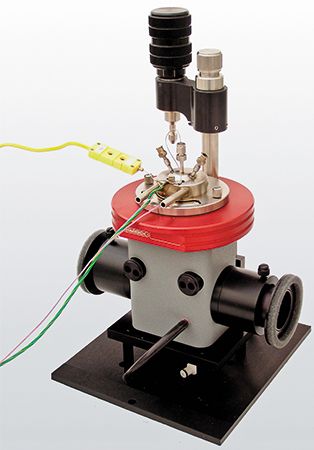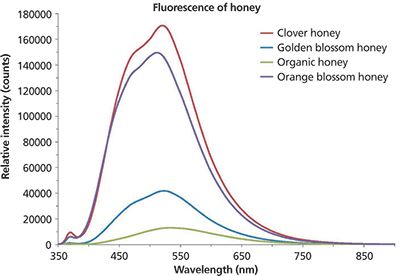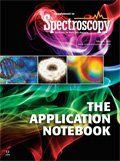An FT-IR Spectroscopic Study of Cooking an Egg Yolk on a Single-Reflection Diamond ATR
Application Notebook
Single reflection ATR spectroscopy is valuable for examining thermally induced changes in materials. Changes in the water concentration and amide bands of egg yolk were observed using the Harrick DiaMaxATR accessory. Further analysis is possible to obtain more rigorous identification of the heat-induced structural changes.
Heating foods and beverages can lead to a variety of chemical changes. These changes can effect storage lifetime and nutritional value. Hence there is a continuing need for highly sensitive methods to detect these changes.
This application note explores the potential of using a high-throughput single-reflection diamond ATR to detect structural changes in egg yolk upon heating.
Experimental
Infrared spectra were collected on an FT-IR spectrometer equipped with the Harrick DiaMaxATR™ single-reflection diamond ATR accessory with its Temperature Controlled Liquid Cell (Figure 1). The system was purged to remove water vapor and CO2. Spectra were collected at 8 cm-1 resolution and signal averaged over 32 scans. A background was collected from the clean ATR crystal at ambient temperature.

Figure 1: The DiaMaxATR™ with Temperature Controlled Liquid Cell.
The egg yolk was separated from the egg white, and ~0.3 mL of the yolk was injected into the heatable cell. A sample spectrum was collected at ambient temperature. Then the cell was heated to 100 °C using the compatible Temperature Controller. Another spectrum was collected when the cell temperature stabilized and at 2 min intervals thereafter. Data collection was controlled by Harrick ATC-Link™ software.
Results and Discussion
The resulting spectra are shown in Figure 2. With increasing temperature, the OH stretching band around 3500 cm-1 decreases in intensity as the water evaporates from the yolk and begins to appear as two underlying broad bands, centered around 3390 cm-1 and 3285 cm-1. The former indicates the presence of amines and the latter carboxylic acids, both of which become more concentrated in the yolk as the water is driven off. In addition, changes are evident in the 1500 to 1700 cm-1 region, as expected from changes in the proteins induced by heating. The amide I bands at 1650 cm-1 and 1635 cm-1 are likely from the α and β helixes, respectively. The broad underlying band in that region may indicate unordered amides. The peaks at 1560 cm-1, 1540 cm-1, and 1522 cm-1 are amide II bands.

Conclusion
Single reflection ATR spectroscopy is valuable for examining thermally induced changes in materials. Changes in the water concentration and amide bands of egg yolk were observed using the Harrick DiaMaxATR accessory. Further analysis is possible to obtain more rigorous identification of the heat-induced structural changes.

Harrick Scientific Products, Inc.
141 Tompkins Ave., 2nd Floor, Pleasantville, NY 10570
tel. (800) 248-3847, Fax (914) 747-7209
Website: www.harricksci.com


.png&w=3840&q=75)

.png&w=3840&q=75)



.png&w=3840&q=75)



.png&w=3840&q=75)










